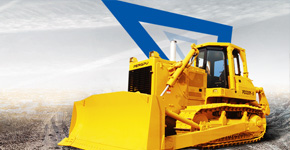Analysis of the causes of faults in the operation of the screw air compressor system and corresponding solutions. Now, let's take a look at the content of the Zhigao screw air compressor from the editor of Hunan Ruisheng Mechanical and Electrical Equipment. The screw compressor is composed of a pair of parallel and mutually meshing female and male screws, and is the most widely used type in rotary compressors. There are two types of screw compressors: dry and wet
Analysis of the causes of faults in the operation of the screw air compressor system and corresponding solutions. Now, let's take a look at the content of the Zhigao screw air compressor from the editor of Hunan Ruisheng Mechanical and Electrical Equipment. The screw compressor is composed of a pair of parallel and mutually meshing female and male screws, and is the most widely used type in rotary compressors. There are two types of screw compressors: dry and wet. The so-called dry type refers to the working chamber without spraying liquid; Wet type refers to injecting lubricating oil or other liquids into the working chamber to cool the compressed gas, and then removing oil or other liquid impurities from the compressed air through high-precision filters to obtain high-quality compressed gas. The dry screw structure is complex, difficult to maintain, noisy, and costly; Wet type is the most widely used, with a simple structure, easy maintenance, and stability and reliability< Br/>
During the suction process, the screw air compressor does not have intake and exhaust valve groups. The intake is only regulated by the opening and closing of a regulating valve. When the rotor rotates, the tooth groove space of the main and auxiliary rotors is the largest when it turns to the inlet end wall opening. At this time, the tooth groove space of the rotor is connected to the free air of the inlet. As the air in the tooth groove is completely discharged during the exhaust, the tooth groove is in a vacuum state when the exhaust is completed, The external air is then sucked in and flows axially into the grooves of the main and auxiliary rotors. Maintenance reminder for screw air compressor: When the air fills the entire tooth groove, the end face of the intake side of the rotor rotates away from the air inlet of the casing, and the air between the tooth grooves is sealed< Br/>
During the sealing and conveying process, when the main and auxiliary rotors end their suction, the teeth of the main and auxiliary rotors are sealed with the casing. At this time, the air is sealed in the teeth groove and no longer flows out, which is the "sealing process". The two rotors continue to rotate, with their tooth peaks and grooves matching at the suction end, and the mating surface gradually moving towards the exhaust end.
.jpg)
During the compression and fuel injection process, the meshing surface gradually moves towards the exhaust end, meaning that the gap between the meshing surface and the exhaust port gradually decreases, and the gas in the gap is gradually compressed, resulting in an increase in pressure. This is called the compression process. And compression
At the same time, lubricating oil is also sprayed into the compression chamber and mixed with the chamber gas due to the pressure differenceWhen the meshing end face of the rotor in the maintenance of the screw air compressor is turned to be connected to the exhaust of the casing, the compressed gas (with the highest pressure at this time) begins to be discharged until the meshing surface of the tooth peak and tooth groove moves to the exhaust end face. At this time, the space between the meshing surface of the two rotors and the exhaust port of the casing is zero, which completes the exhaust process. At the same time, the length of the tooth groove between the meshing surface of the rotor and the exhaust port of the casing reaches the longest, The inhalation process is ongoing again< Br/>
Fault analysis and handling measures for screw air compressor operation: As the main equipment in the industry that provides compressed air, screw air compressors inevitably encounter faults that affect their operation. The following text provides a detailed explanation of their faults and solutions< Br/>
Tripping problem of screw air compressor: Tripping problem of air compressor refers to the phenomenon of tripping due to one or some reasons during its normal operation. By analyzing this phenomenon in detail, it can be found that the cause of tripping in actual operation is not unique. Generally speaking, the reason for air compressor tripping is that the temperature exceeds the upper limit of the air compressor temperature; Ventilation equipment malfunctions; The oil level is too low; Insufficient oil pressure injected into the main engine; Short circuit or prolonged operation of equipment due to small cross-sectional area of transmission lines< Br/>
When the air compressor trips, it is often accompanied by a sudden drop in pressure within the system. Maintaining this state of operation for a long time may lead to safety accidents in the air compressor. The phenomenon of tripping is a major equipment problem in operation faults. Therefore, when the tripping phenomenon occurs, the overall system of the air compressor should be immediately inspected and dealt with. Generally speaking, common treatment measures include: comprehensive troubleshooting of the cooling system to determine whether the operation is normal and effective; Check the operation and condition of the ventilation device, and manually ventilate the air compressor room to reduce the ambient temperature during the operation of the screw air compressor; Fill the oil and gas separator with oil to ensure its oil level is within the normal operating range; Check if there is a short circuit in the equipment circuit, replace the equipment wires if necessary, increase the cross-sectional area of the wires to reduce heat generation; Check the oil gas separator filter element and replace it if there is blockage< Br/>
The problem of insufficient pressure in screw air compressors: The problem of insufficient pressure in screw air compressors is usually manifested as the pressure of the air compressor consistently failing to meet the mechanical requirements during continuous operation. The reasons for this malfunction are also not unique, mainly due to the following factors: high air consumption in the system, resulting in the inability of the air inlet speed to compensate for the consumption; When air enters, it is obstructed at the filter, usually due to blockage caused by long-term use of the air filter; Large area air leakage fault in the air compressor system; The filter element in the oil gas separator may have malfunctioned< Br/>
Insufficient pressure of the screw air compressor will cause problems in the corresponding production process or process, which will affect the overall operation. When the screw air compressor experiences insufficient pressure, the corresponding treatment methods for this mainly include the following: reducing the air pressure in the systemIn this case, the faulty parts should be inspected, repaired, or replaced< Br/>







 Industry Trends
Industry Trends
.jpg)
